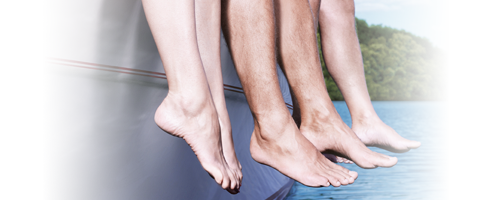Varicose veins are a common disease
Here you will find answers to your questions on spider veins

Frequently asked questions
What is the difference between laser therapy and micro-sclerotherapy in combatting spider veins?
Micro-sclerotherapy sticks spider veins together from the inside. In this way, the affected vein is permanently obliterated, is converted to connective tissue with time, and is no longer visible in the skin.
Laser therapy heats up the red blood cells in the spider veins from the outside. The heat also causes the vein walls to stick together and superficial spider veins can disappear with time. Laser treatment is most suitable for delicate spider veins (telangiectasia), particularly those found on the nose or cheeks. Micro-sclerotherapy is recommended as an effective method if there are marked spider veins on the legs.
As laser beams do not penetrate far into the tissues, they hardly reach the more deeply lying inflow to spider veins and are therefore unable to treat it. This inflow has to be shut off, however, in order for the spider veins to disappear completely. Micro-sclerotherapy is appropriate for blocking off the inflow and the somewhat deeper lying varicose veins.
As many people also find that laser therapy is painful, micro-sclerotherapy remains the gold standard for treating spider veins according to today’s scientific knowledge.
